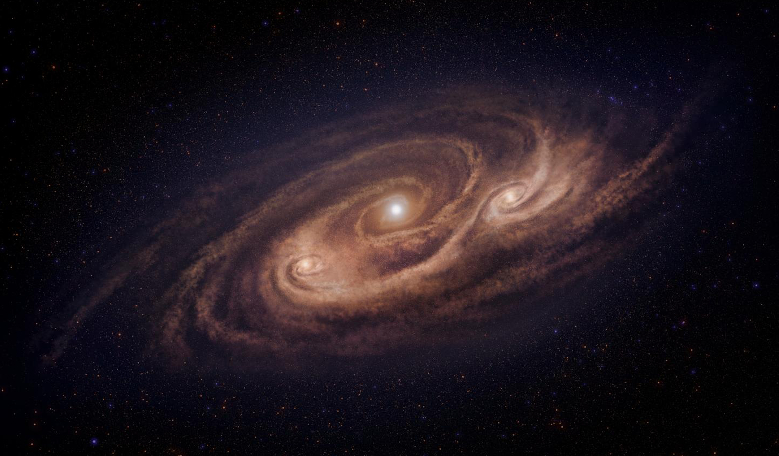An unstoppable monster that appears highly organised for its young age, is helping astronomers answer as many questions about massive starburst galaxies as it is raising new ones.
The beast in question is known as COSMOS-AzTEC-1; a so-called "monster galaxy” or extreme starburst galaxy, types of which are thought to be ancestors of massive galaxies like the Milky Way in today's Universe.
This behemoth is ‘only’ just over a billion years old, and how these galaxies were able to amass such a large quantity of gas so early on has been something of a mystery.
"A real surprise is that this galaxy seen almost 13 billion years ago has a massive, ordered gas disk that is in regular rotation instead of what we had expected, which would have been some kind of a disordered train wreck that most theoretical studies had predicted,” said co-author Min Yun, professor of astronomy at UMass Amherst and a member of the team that discovered the galaxy.
COSMOS-AzTEC-1 was first discovered with the James Clerk Maxwell Telescope (JCMT), and later with the Large Millimeter Telescope (LMT). However with additional data from the Atacama Large Millimeter/submillimeter Array (ALMA), an international team of astronomers from Japan, Mexico and the University of Massachusetts Amherst have been been able to to spy on the monster with 10 times higher angular resolution than ever before, to reveal galaxy structural details that were previously completely unknown.
So what is lurking within the colossal gaseous body of this cosmic relic? Aside from an enormous amount of carbon monoxide gas in the galaxy, the team found that there are two distinct large clouds several thousand light-years away from the centre. "In most distant starburst galaxies, stars are actively formed in the centre. So it is surprising to find off-centere clouds,” explains Ken-ichi Tadaki, a postdoctoral researcher at the Japan Society for the Promotion of Science and the National Astronomical Observatory of Japan, the lead author of the research paper published in the journal Nature.
Starburst galaxies are called so because they churn out stars at a frenzied pace – up to 1000 times higher than the star formation in our Galaxy, and COSMOS-AzTEC-1 is no exception. In this case, the key component to the overly active star formation is that the clouds throughout the galaxy are very unstable, which is not normally the case.
Gas clouds keep in equilibrium as long as the inward force of gravity is matched by the outward force of pressure. Once gravity overcomes pressure, the gas cloud collapses and stars start popping out at a rapid pace.
However, as the stars and supernova explosions start blasting out gases at the ends of their lives, it adds to the outward pressure. The cloud therefore becomes balanced again and star formation continues at a moderate pace. In this way star formation in galaxies is self-regulating.
But, in COSMOS-AzTEC-1, the pressure is far weaker than the gravity, which at the moment means only one outcome; runaway star formation. While popping out stellar offspring at a prodigious rate might seem like a good thing, it is bad news for COSMOS-AzTEC-1.
This unstoppable star-forming monster-machine will eat up all of its gas in 100 million years – round 10 times faster compared with other star forming galaxies – say the team.
So far, the causes for its ferocious appetite is not yet clear; a merger with another galaxy could have transported the gas into a small area and ignited intense star formation, but the evidence is sparse.
"At this moment, we have no evidence of merger in this galaxy,” says Tadaki. But the unprecedented resolution of ALMA that can help draw detailed maps of molecular clouds is an important step that could change all of that. By observing other similar galaxies with this world-class array, the relation between galaxy mergers and monster galaxies could soon be unveiled added Tadaki











